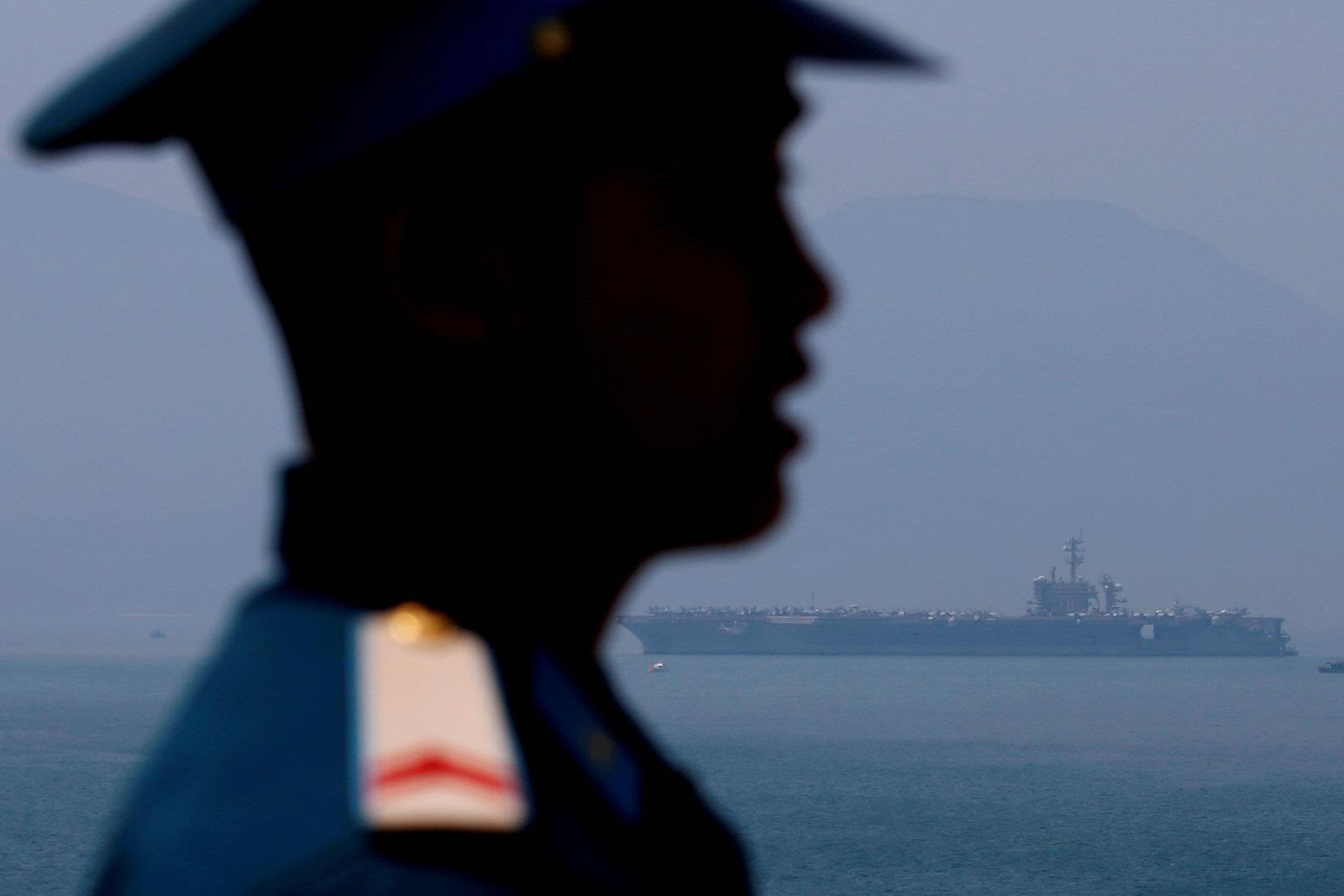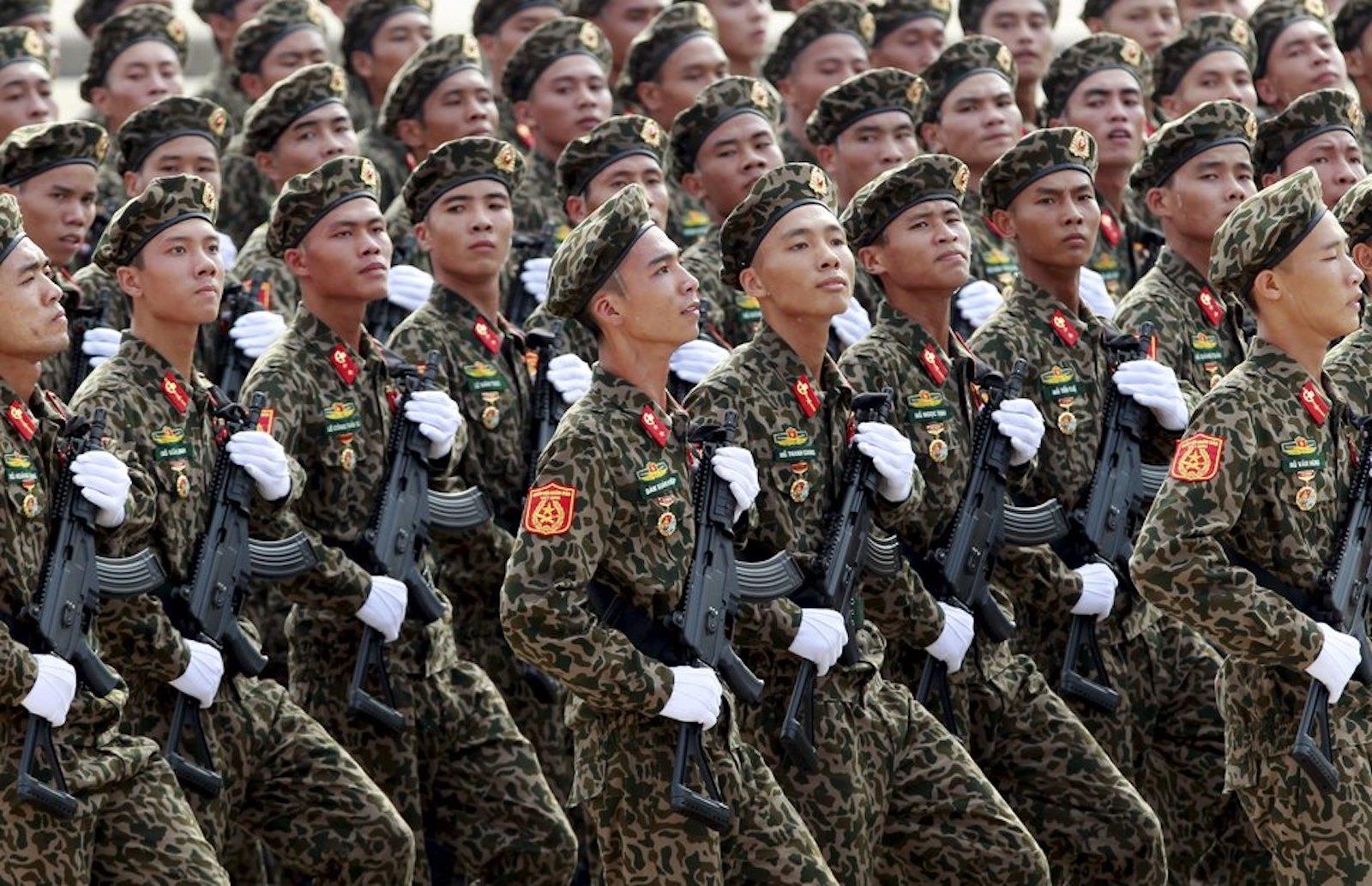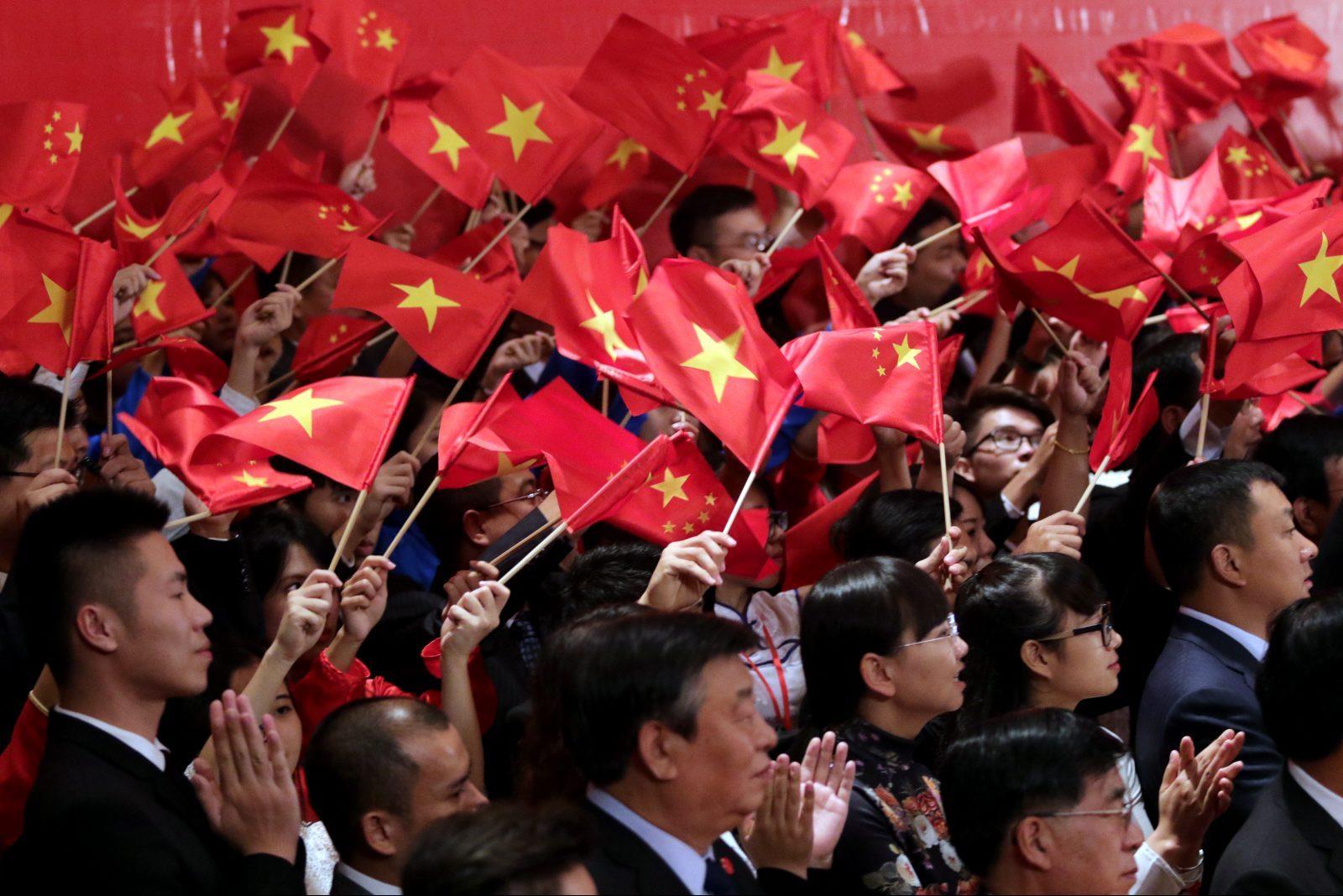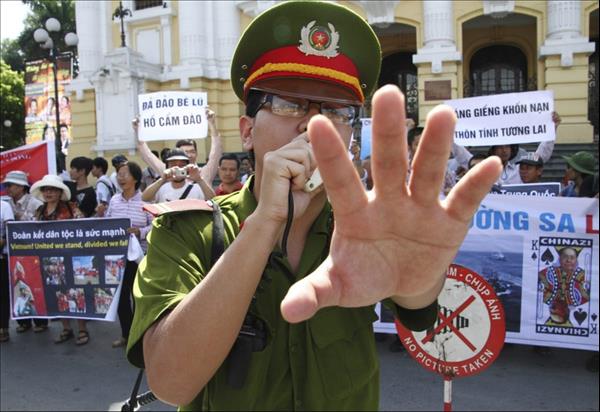
China Stokes Encirclement Fear In Next-Door Vietnam
With a 3,200-kilometer coastline, it would seemingly be hard to feel claustrophobic. But Vietnam, which has skirmished with China for decades over contested borderlands and disputed territory in the South China Sea, now faces the prospect of being encircled by its giant northern neighbor.
For millennia, Vietnam has been aggressed from the north by China across their shared 1,297-kilometer border. The last war the two historical adversaries fought in the 1980s, the so-called Third Indochina War, saw Chinese forces launch numerous border incursions.
To Vietnam's east, China has occupied the Paracel Islands for decades and has militarized an estimated seven features in the South China Sea. Altercations between their fishing vessels and maritime militia in the sea are frequent and common.
Hanoi argues that Beijing is salami-slicing its way to controlling the entire sea area. Its latest Defense White Paper, released in 2019, stated that“great-power competition is getting increasingly tense” while the South China Sea could become a“flashpoint.”
Potentially worse for Vietnam are persistent reports that Cambodia, its western neighbor, might allow China to station troops at its Ream Naval Base, which opens into the Gulf of Thailand and could potentially provide China a southern flank on the South China Sea.
Even if that doesn't mean a permanent Chinese military presence – which Phnom Penh adamantly insists there won't be – a small rotational posting could be used by Beijing for surveillance of Vietnam's naval forces, most of which are based nearby.
Any Chinese military presence in Cambodia or Laos, another Beijing ally, would leave Vietnam threatened from the west and south.

Image: Twitter / VOA
“Beijing's attempts to woo Vietnam's neighbors, Cambodia and Laos, with economic rewards are as dangerous to Hanoi as its destabilizing actions in the [South China Sea],” Khang Vu, a doctoral candidate in the Political Science Department at Boston College, recently wrote in regional media.
“Vietnam being encircled by China on four fronts only means one thing, which is that China is posing a comprehensive threat to Vietnam on both land and sea,” he told Asia Times.
Vu says Vietnam has two choices to break this emerging encirclement. Either it has to seek stronger defense cooperation with the US, Japan and India, or it can increase its own military power without formal alliances to ensure that“China does not pose a threat to its survival.”
Although the US Navy is no stranger to Vietnam's ports, Hanoi has so far avoided any direct military alliance with any partner. Both sides were poised to upgrade relations to a“strategic partnership” in 2019 but failed to follow through. In part, that's because of Vietnam's historic“three no's” policy, which was recently expanded to“four no's.”
The latest Defense White Paper states that“Vietnam consistently advocates neither joining any military alliances, siding with one country against another, giving any other countries permission to set up military bases or use its territory to carry our military activities against other countries nor using force or threatening to use in international relations.”
But the same White Paper added an important caveat:“Depending on circumstances and specific conditions, Vietnam will consider developing, necessary, appropriate defense and military relations with other countries.”
Derek Grossman, a senior defense analyst at the RAND Corporation, argued earlier this year that“Hanoi's non-aligned foreign policy since the end of the Cold War means China might attack without fear of reprisal from stronger nations.”

A Vietnamese soldier keeps watch in front of US aircraft carrier USS Carl Vinson after its arrival at a port in Danang, Vietnam March 5, 2018. Photo: Agencies
Due to its“four no's” policy, Vietnam is likely to adopt the second option of armed neutrality, said Vu.
“Vietnamese political and military leaders are well aware of China's military strength and growing technological prowess,” said Carl Thayer, an emeritus professor at the University of New South Wales in Australia.“They adopt a sanguine view of their strategic position; in other words, China's so-called encirclement of Vietnam presents both opportunities and challenges.”
In February 2021, Thayer noted, the ruling Communist Party approved a resolution to initiate“Vietnam's most ambitious and far-reaching program to modernize its armed forces.”
It called for the creation of a“compact and strong” Vietnam People's Army by 2025, as well as the modernization of certain parts of the armed forces by 2030. Modernization of the rest of the military would take place afterward.
Vietnam will face two major challenges in meeting these goals, analysts say. First, it has to maintain high economic growth to finance its arms procurements, especially those that involved advanced technologies.
Vietnam's military spending dipped from 7.9% of GDP in 1990, at the end of its last war with China, to around 2.3% in the late 2010s, according to the World Bank.
In real terms, however, it spent US$5.7 billion on defense in 2018, up from $3.6 billion in 2010, according to the SIPRI Military Expenditure Database.
But Hanoi has more recently committed to reducing state expenditures due to concerns about its mounting debt. That broad budgetary belt-tightening will present difficult choices for Hanoi in allocating its future defense spending.
Even if it was to spend around 3% of GDP on defense (or around $6.3 billion a year), that would only represent 2.5% of what China currently spends on its military annually.
Second, it will need to tread carefully to avoid US sanctions if it decides to continue procuring arms from Russia, its principal provider of military equipment dating back to the Cold War.
Between 1995 and 2021, Vietnam's arms imports totaled $9.07 billion, of which Russia accounted for $7.4 billion, or 81.6% of the total, according to SIPRI.

Soldiers marching during a celebration to mark National Day at Ba Dinh square in Hanoi. Image: Twitter
However, Hanoi could face a bigger challenge. For decades, Vietnamese defense policy has centered chiefly on the sea.
According to a source with knowledge of Vietnamese defense ministry debates, there is now growing recognition that Vietnam needs to partially shift its focus away from maritime to land defense.
In early 2021, reports surfaced that China was building a surface-to-air missile base 20 kilometers from its border with Vietnam.
Taking effect in January, China's new land border law seeks to strengthen its border control and protection. Beijing will“resolutely defend territorial sovereignty and land border security,” it states. Analysts, however, foresee a muscular bid by China to resolve border disputes on its preferred terms.
From Vietnam's perspective, much will come down to Cambodia and Laos. According to some commentators, Vietnam has“lost” its former ally in Cambodia.
Vietnam's military support in 1979 to overthrow Cambodia's genocidal Khmer Rouge regime, a Beijing ally, sparked the Third Indochina War. Cambodia remained resolutely pro-Vietnam until the early 2000s when Beijing began to develop ties with Phnom Penh.
“Vietnam's post-Cold War reorientation toward the [South China Sea] is based on the premise that its land borders are already secured. But China's moves to win Laos and Cambodia to its side should shift its focus back landward,” Vu has argued.
Hanoi is ramping up engagement with its western neighbors. Cambodian Prime Minister Hun Sen and Vietnamese President Nguyen Xuan Phuc signed new cooperation deals on security and national defense during a meeting last December.
“The two sides agreed to strengthen cooperation in defense and security based on the principle of not allowing any hostile forces to use their respective territories to harm the other's security,” the two leaders said in a joint statement.
In May this year, Tea Banh and Phan Van Giang, the defense ministers of Cambodia and Vietnam, respectively, held their first border defense friendship exchange in Hanoi.
Vietnam has also increased its investment in Cambodia and bilateral trade stood at nearly $9 billion last year, marking an 80% rise compared to 2020. Cambodia's trade with China was worth $11 billion last year.
Similarly, Vietnam is also busy reforming relations with Laos, another of its historic allies. Hanoi has pledged funds to build new infrastructure projects in the landlocked state, including a proposed railway that would connect Vientiane with Vietnam's port city of Vung Ang.
Refreshing ties with Cambodia and Laos are key to Vietnam's new emerging security approach, analysts say. Hanoi and Beijing's contest over influence in Phnom Penh and Vientiane could define mainland Southeast Asian geopolitics in the years to come, some say.
“The so-called encirclement thesis posits that China and Vietnam view each other as adversaries at best and enemies at worst, leaving Vietnam little option but to align with the United States. The situation is far more complex,” Thayer said.

Vietnamese and Chinese communist youths wave flags to welcome Chinese President Xi Jinping and Vietnamese Communist Party General Secretary Nguyen Phu Trong at a meeting in Hanoi on November 6, 2015. Photo: AFP / Na Son Nguyen
Vietnam also has a long history of adapting.
“Vietnam has lived with the Chinese threat for thousands of years without relying on an external great power for help so it has experience in figuring out how to balance between two contradicting trends on its own: ensuring its independence from China while not angering it at the same time,” said Vu.
“This is because Vietnam reaps more benefits from a cordial relationship with its northern superpower than a hostile one. Armed neutrality seems to be the better option in this case,” Vu added.
Follow David Hutt on Twitter at @davidhuttjourno

Legal Disclaimer:
MENAFN provides the
information “as is” without warranty of any kind. We do not accept
any responsibility or liability for the accuracy, content, images,
videos, licenses, completeness, legality, or reliability of the information
contained in this article. If you have any complaints or copyright
issues related to this article, kindly contact the provider above.
Most popular stories
Market Research

- R0AR Chain Announces $100,000 Community Rewards For Creators, Yappers, And Brand Evangelists
- Cryptolists Recognised As“Crypto Affiliate Of The Year” At SBC's Affiliate Leaders Awards 2025
- Tradesta Becomes The First Perpetuals Exchange To Launch Equities On Avalanche
- 0G Labs Launches Aristotle Mainnet With Largest Day-One Ecosystem For Decentralized AI
- Nebeus Overfunds Equity Crowdfunding Campaign With €3.6M Raised, Reflecting Growing Demand For Regulated Cryptofinance Solutions
- Daytrading Publishes New Study Showing 70% Of Viral Finance Tiktoks Are Misleading

















Comments
No comment